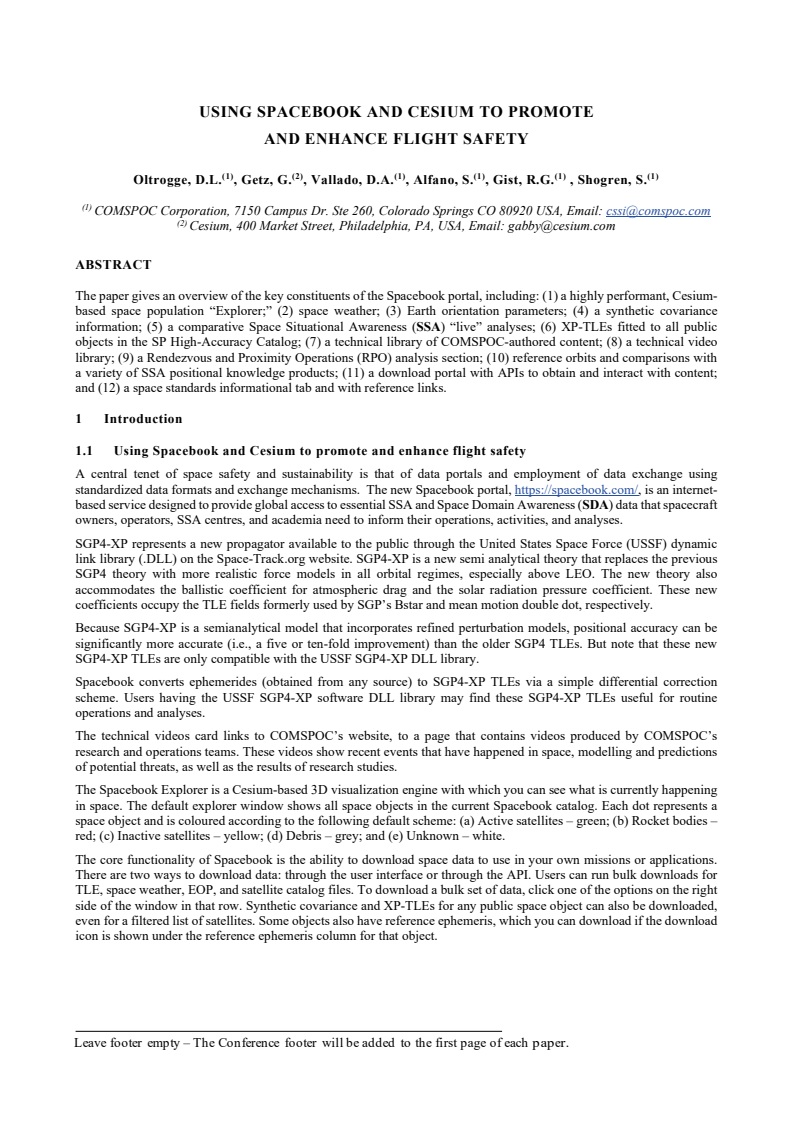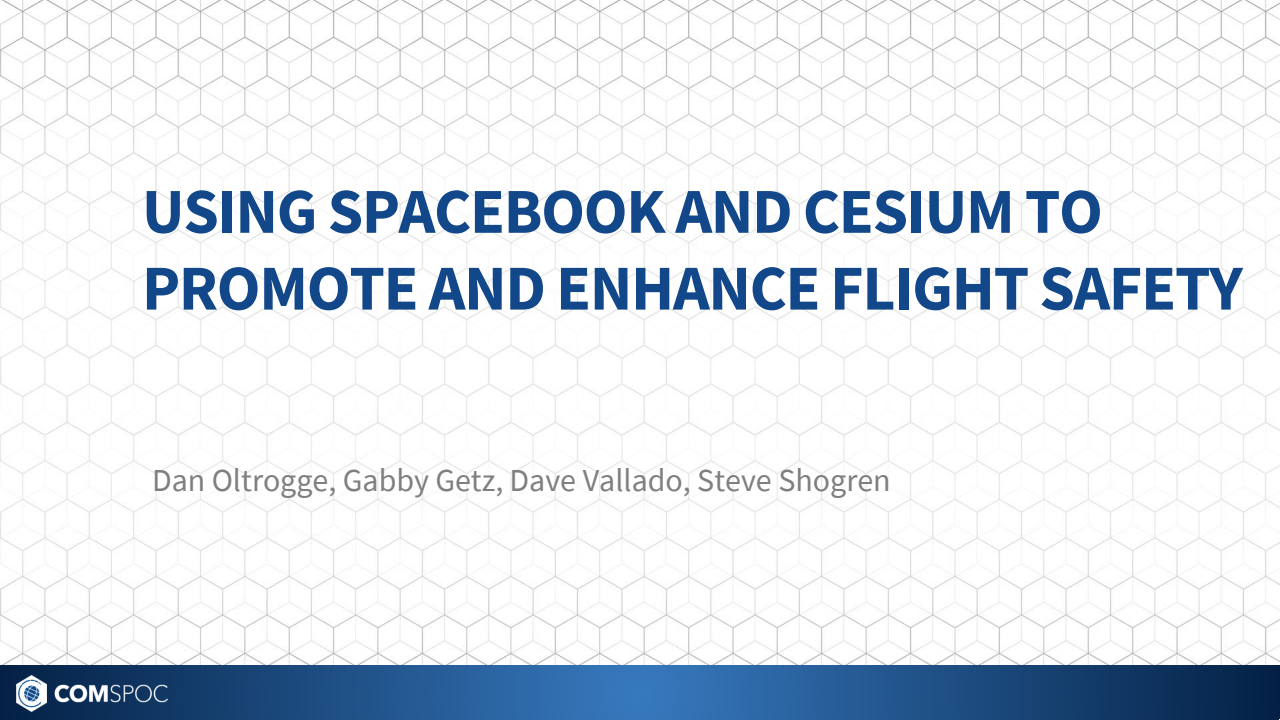Using Spacebook and Cesium to Promote and Enhance Flight Safety


Id: 381
Type: Conference paper
Published: 04/02/2025
Event: European Conference on Space Debris (ECSD)
Authors:
Click an author to filter the list of related assets below.Abstract:
The paper gives an overview of the key constituents of the Spacebook portal, including: (1) a highly performant, Cesium-based space population “Explorer;” (2) space weather; (3) Earth orientation parameters; (4) a synthetic covariance information; (5) a comparative Space Situational Awareness (SSA) “live” analyses; (6) XP-TLEs fitted to all public objects in the SP High-Accuracy Catalog; (7) a technical library of COMSPOC-authored content; (8) a technical video library; (9) a Rendezvous and Proximity Operations (RPO) analysis section; (10) reference orbits and comparisons with a variety of SSA positional knowledge products; (11) a download portal with APIs to obtain and interact with content; and (12) a space standards informational tab and with reference links.
Keywords:
Click a keyword to filter the list of related assets below.Citation:
Oltrogge, D.L., Getz, G., Vallado, D.A., Alfano, S., Gist, R.G., Shogren, S., "Using Spacebook and Cesium to Promote and Enhance Flight Safety," European Conference on Space Debris, Bonn, Germany, 2 April 2025.
Papers with related authors:

Synthetic Covariance Production Using a New Digital Approach
Read More
Actionability and Persistence Of Conjunction Data
Read More
Actionability and Persistence of Conjunction Data
Read More
Actionability and Persistence of Conjunction Data
Read More

Russian ASAT Debris Cloud Evolution and Risk
Read More
Results of comprehensive STCM data fusion experiment
Read More
Practical issues with using a full gravity field
Read More
Deep operator and SSA collaboration for space sustainability
Read More
Addressing the debilitating effects of maneuvers on SSA accuracy and timeliness
Read More
DEEP OPERATOR AND SSA COLLABORATION FOR SPACE SUSTAINABILITY
Read More
Debris Risk Evolution And Dispersal (DREAD) for post-fragmentation modeling
Read More
Fragmentation event debris field evolution using 3d volumetric risk assessment
Read More
Application of New Debris Risk Evolution And Dissipation (DREAD) Tool to Characterize Post-Fragmentation Risk
Read More
Updated Analytical Partials for Covariance Transformations and Optimization
Read More






LEO satellite behavior during the May 2024 Gannon geomagnetic storm
Read More
Contrasting the Inflection Points and Efforts in Space Traffic Coordination and Management
Read More






Sequential Processing of ILRS Observations – Experiences over the last 5 years
Read More


Orbital Strategies to Mitigate the Solar Exclusion Effect on Space-Based Observation of the Geosynchronous Belt
Read More
New Consolidated Files for Earth Orientation Parameters and Space Weather Data
Read More
Sequential Orbit Determination Using Satellite Laser Ranging
Read More
Improved SSA through orbit determination of Two Line Element Sets
Read More


Evaluating Gooding Angles-only Orbit Determination of Space Based Space Surveillance Measurements
Read More
ORBIT DETERMINATION ISSUES AND RESULTS TO INCORPORATE OPTICAL MEASUREMENTS IN CONJUNCTION OPERATIONS
Read More





